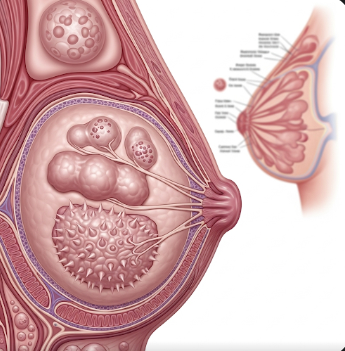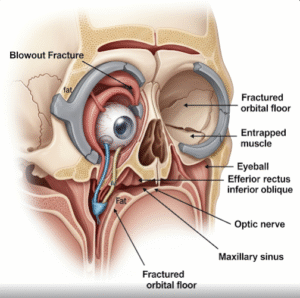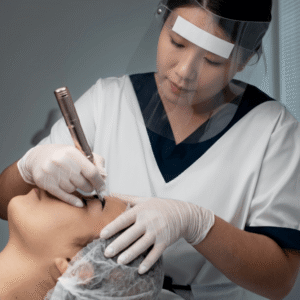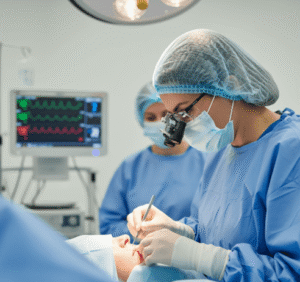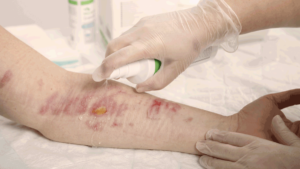Overview
Breast lumps are localized swellings or masses in the breast tissue that can arise from a variety of causes, ranging from benign cysts or fibroadenomas to malignant tumors. The presence of a lump often causes concern, prompting thorough evaluation to determine its nature.
In Korea, breast lumps are managed in specialized breast clinics and hospitals using advanced imaging, minimally invasive diagnostic procedures, and personalized treatment plans. Korean healthcare emphasizes accurate diagnosis, early intervention, and minimally invasive management to ensure optimal outcomes and patient reassurance.
What is a Breast Lump?
A breast lump is any palpable swelling or irregularity within the breast tissue. Most lumps are benign, but some may be indicative of breast cancer. Common types of breast lumps include:
- Cysts: Fluid-filled sacs that are usually benign
- Fibroadenomas: Solid, non-cancerous tumors common in younger women
- Lipomas: Soft, fatty lumps
- Infections or abscesses: Swelling due to bacterial invasion
- Malignant tumors: Cancerous growths that require urgent evaluation
Breast lumps can vary in size, texture, and mobility, with some being easily noticeable while others are detected only through imaging.
Symptoms
The characteristics of breast lumps depend on the underlying cause:
- Palpable mass that may feel firm, soft, or rubbery
- Pain or tenderness (more common in cysts or infections)
- Skin changes over the lump, such as dimpling or redness
- Nipple changes or discharge in some cases
- Swelling or enlargement of the affected breast
- Mobility: Benign lumps are often movable; malignant lumps are usually fixed
It is important to seek medical evaluation for any new or persistent breast lump, especially if accompanied by other changes.
Causes
Breast lumps can arise from multiple causes:
- Benign breast conditions: Fibroadenomas, cysts, or lipomas
- Hormonal fluctuations: Fibrocystic changes common during menstrual cycles
- Infections: Mastitis or breast abscesses
- Trauma: Injury causing hematoma or fat necrosis
- Breast cancer: Malignant tumors originating from ducts or lobules
- Inflammatory conditions: Rare autoimmune or inflammatory disorders
Risk Factors
The likelihood of developing breast lumps varies based on the cause:
- Age: Younger women often develop benign lumps; risk of malignancy increases with age
- Hormonal factors: Pregnancy, menstrual cycles, menopause, and hormone therapy
- Family history: Increased risk of breast cancer or fibroadenomas
- Previous breast conditions: Cysts, fibroadenomas, or infections
- Lifestyle factors: Obesity, alcohol consumption, and smoking
- Genetic predisposition: BRCA1 and BRCA2 mutations increase malignancy risk
Complications
While many breast lumps are benign, untreated or malignant lumps can lead to complications:
- Progression of malignancy: Delay in diagnosis can allow cancer to spread
- Infections or abscesses in cases of infectious lumps
- Chronic pain or discomfort
- Psychological distress due to uncertainty or fear of cancer
- Interference with breastfeeding in lactating women
Prevention
While not all breast lumps can be prevented, risk reduction and early detection strategies include:
- Regular breast self-examinations to detect changes early
- Routine screening: Mammography and ultrasound, especially for women over 40 or high-risk individuals
- Healthy lifestyle: Balanced diet, regular exercise, and avoidance of smoking
- Hormonal management: Monitoring hormone therapy or contraceptive use
- Awareness of family history and genetic counseling if applicable
Treatment Options in Korea
Diagnosis
Accurate diagnosis is essential to differentiate benign from malignant lumps:
- Physical examination: Identifies lump characteristics
- Ultrasound imaging: Distinguishes solid from cystic lesions
- Mammography: Detects suspicious or non-palpable lumps
- MRI: For high-risk patients or complex cases
- Biopsy: Fine-needle aspiration or core biopsy for histopathological diagnosis
- Laboratory tests: Occasionally used to evaluate systemic involvement
Medical Management
- Observation: Some benign lumps may be monitored without intervention
- Pain management: Analgesics for tender or painful lumps
- Antibiotics: For infected or abscess-related lumps
- Hormonal therapy: Occasionally for hormone-related fibrocystic changes
Surgical Management
- Excision: Removal of fibroadenomas, lipomas, or suspicious lumps
- Minimally invasive procedures: Ultrasound-guided removal of small or complex cysts
- Breast-conserving surgery: For early-stage malignancy, preserving breast tissue
- Mastectomy: For extensive malignancy or multiple lesions
Supportive Care
- Follow-up imaging to monitor for recurrence
- Breastfeeding guidance for lactating women
- Psychological support to address anxiety or fear
- Patient education on recognizing changes and ensuring timely medical consultation
Prognosis
The prognosis for breast lumps depends on the underlying cause and timely management:
- Benign lumps: Generally excellent prognosis with monitoring or minor interventions
- Malignant lumps: Early detection and treatment in Korea’s specialized breast clinics significantly improve survival
- Minimally invasive and advanced surgical techniques preserve breast function and appearance
- Long-term follow-up ensures early detection of recurrence or new lumps
- Comprehensive care in Korea integrates diagnostic precision, targeted therapy, surgical expertise, and psychological support for optimal outcomes
Korean hospitals and breast clinics provide state-of-the-art care for breast lumps, combining advanced imaging, minimally invasive procedures, biopsy and surgery, follow-up care, and patient education, ensuring early diagnosis, effective treatment, and long-term breast health.

